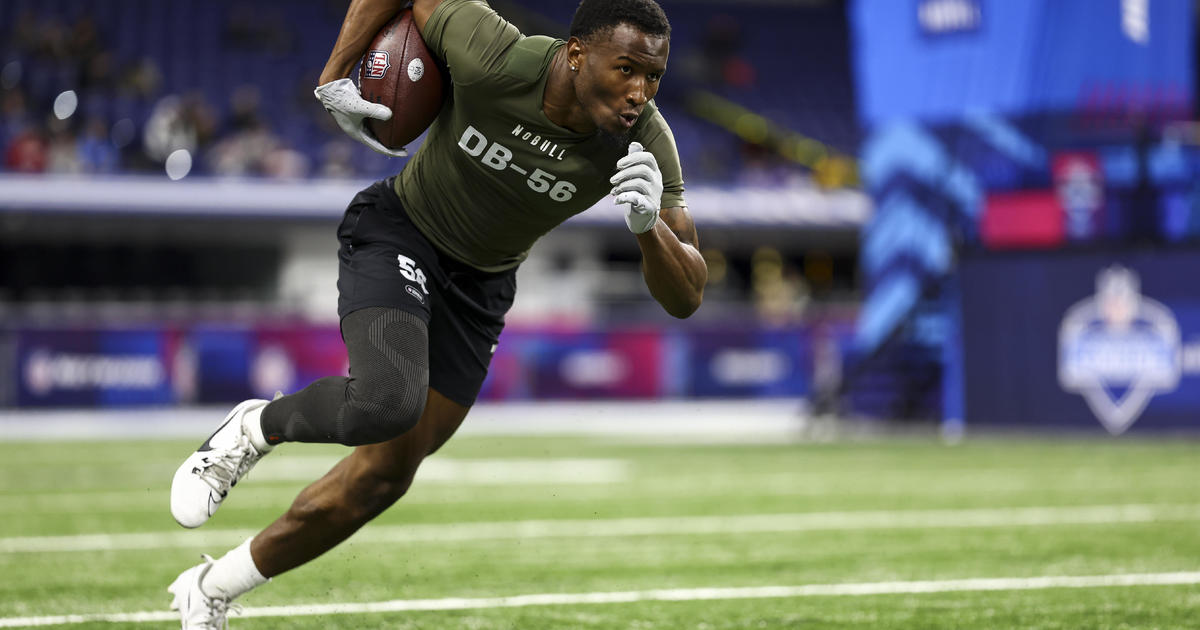The Report Card: Why Aren't More Women Coaching Women?
MINNEAPOLIS (WCCO) -- It's a big day in college sports -- Selection Sunday -- but here's a statistic that probably never even crossed your mind: 100 percent of the men in the men's basketball tournament are coached by men.
That's a luxury nowhere near true for women. In fact, across all college sports, it's true for only four out of 10 women.
But there's a woman at the University of Minnesota trying to change that.
"It's interesting because I often get the question, why should we care that girls and women are coached by women?" Nicole LaVoi, Ph.D., said. "And my answer is, the data shows us same-sex role models matter. For confidence, and self-perceptions, and emulation. Most all boys have a male head coach at some time. And that's just not the case for girls. And they need same-sex role models just like their male counterparts."
LaVoi is a researcher at the University of Minnesota. She's been tracking this issue with an annual Report Card each of the last six years. Her project analyzes the percentage of women's teams that have a woman head coach at each school in the seven most prominent Division I conferences and hands out a yearly grade.
"If we used a standard grading scale that I use in my classroom, where 59 percent or below is an F, you fail, all but two schools would have failed," LaVoi said.
Instead...
"We know that 40 percent of women are coached by women. So 40 percent is average, that's a C," LaVoi said.
Even so, only two schools got an A for having at least 70 percent women coaching women. Out of 86 in those seven conferences.
Nine got an F for less than 25 percent.
___
DAVID MCCOY: Any time I've ever talked to administrators about this issue they always say, I don't want to hire a woman, I don't want to hire a man -- not looking to hire a man -- I just want the best candidate.
NICOLE LAVOI: Yeah, and look. Athletic departments are competitive workplaces. It's about winning, and we want the best coaches in place.
So what I would advocate for is for college athletic directors to diversify their formal and informal networks, when they are trying to fill the candidate pools. Because people tend to hire people in their networks. And we know, from data, that the old boys club is alive and well.
Before the job even hits the job market they have a short list, already. And that short list is people in their network or that they know. So what I would advise, and many athletic directors do this, is to call colleagues, to reach out across diverse networks, to call the Alliance of Women Coaches, and to really actively, and personally, reach out and recruit women to apply for the position. They need to be asked. Because they're not in your network.
DM: Are things getting better? Is this improving? Are we making progress?
NL: So this year, and for four years in a row now, the percent of women head coaches of women's teams has gone up. The gains are small. This year we went up 0.4 percent. Not 4 percent, 0.4. But we quadrupled our gains from last year which was 0.1.
DM: Are there enough qualified women right now to be filling these head coach roles, or do we maybe have a supply-side issue here as well?
NL: What's interesting about this work, David, is that there are a lot of what I call false narratives around women coaches. One of those narratives is, there aren't enough women applying. There aren't enough good candidates in the pool. That's a supply-side argument. I challenge that by saying, look, at a time in history where you have record numbers of females that have played collegiate sport at a very high level, that have knowledge and passion and want to give back to their sport, that they simultaneously become less interested and less qualified to coach.
DM: Should we eventually, at some point in the future, get to a place where we have 100 percent women coaching women, would that be ideal?
NL: Yeah, I get that question a lot. So what's the end game, with this report card? The end game is to track progress over time.
I'm not saying that girls and women should not be coached by men. That gets convoluted in this argument. I think there are many wonderful male coaches that are coaching our girls and women, and many of them are here at the University of Minnesota. What I do want is that 100 percent of girls and women, at some point in their sport career, get a female head coach as a visible, powerful, confident role model.
DM: One thing that you can't help but notice in this report card is that Minnesota's got the third best score in the country.
NL: Yeah, we should be proud that the University of Minnesota is third out of 86 peer institutions. And I think that really shows that the University of Minnesota over time and currently has a commitment to gender equity in women's athletics, where that women on the coaching staff are valued and supported and it's a place where women head coaches want to work.
___
In fact, Minnesota is only one hire away from an A. LaVoi says the easiest way for schools to improve their grade and promote gender equity is to make every effort to replace an outgoing male coach with a female replacement.
Your daughter's role models depend on it.
LaVoi said she was particularly encouraged by something that happened this year at the high school level. For the first time ever, both state champions in girls hockey in Minnesota were coached by female head coaches.



